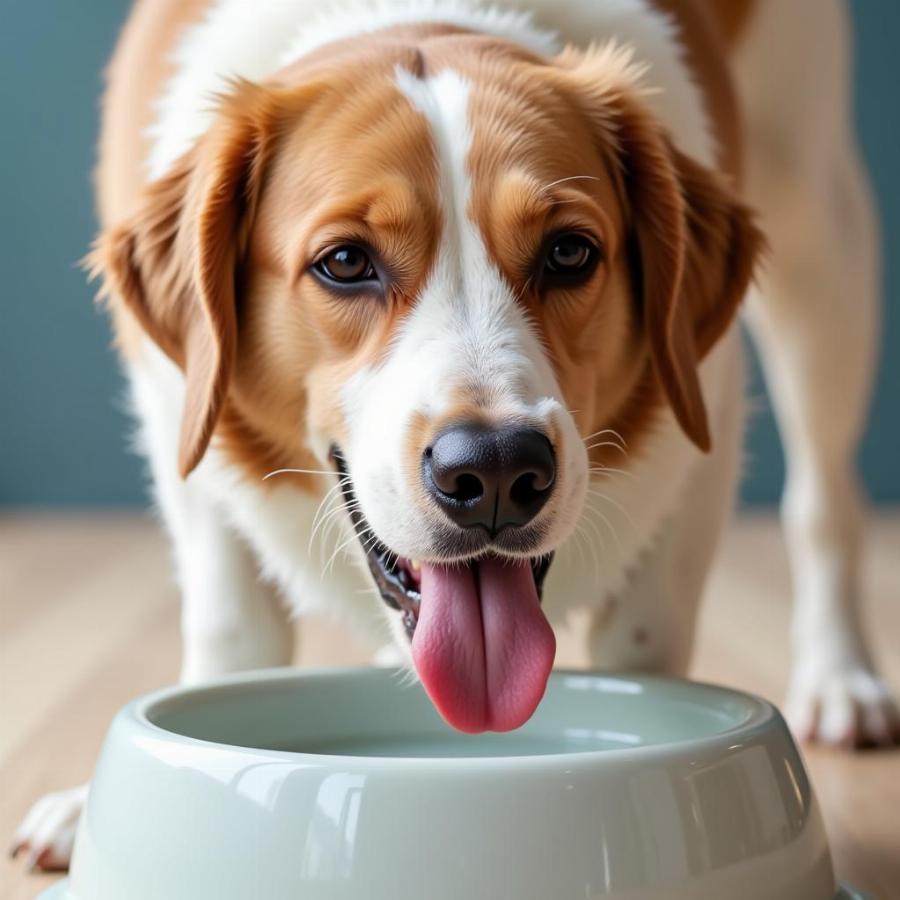As a loving dog owner, it’s natural to worry about your furry friend’s bathroom habits. You may wonder, “How long can dogs go without peeing?” The answer depends on a few factors, but knowing the general guidelines can help you keep your pup comfortable and healthy.
Generally, adult dogs can hold their pee for about 6-8 hours, but this is just an average. Puppies, senior dogs, and dogs with certain medical conditions may need to go more frequently. Let’s dive into the specifics so you can better understand your canine companion’s needs.
Factors Affecting How Long Dogs Can Hold Their Pee
Several factors influence a dog’s bladder capacity and how often they need to relieve themselves:
- Age: Puppies have smaller bladders and haven’t fully developed bladder control. As a general rule, a puppy can hold their pee for about one hour for every month of age (up to about 8 hours). Senior dogs may also experience a decline in bladder control as they age.
- Size and Breed: Larger dog breeds naturally have larger bladders than smaller breeds.
- Water Consumption: It’s no surprise that the more water a dog drinks, the more frequently they’ll need to urinate.
- Diet: Certain foods, like those high in sodium, can increase a dog’s thirst and, consequently, their urination frequency.
- Activity Level: Active dogs may need to pee more often than their more sedentary counterparts.
- Health Conditions: Underlying medical conditions, such as urinary tract infections, diabetes, or kidney disease, can significantly impact a dog’s urination patterns.
When to Be Concerned
While it’s normal for dogs to have variations in their bathroom habits, it’s essential to recognize potential warning signs that could indicate a problem:
- Straining or Difficulty Urinating: If your dog is visibly struggling to pee, it could signal a blockage or other medical issue.
- Frequent Accidents in House-Trained Dogs: Sudden changes in housetraining habits should always be investigated.
- Blood in the Urine: This is a serious symptom that requires immediate veterinary attention.
- Excessive Thirst and Urination: While this can be a sign of increased water intake, it can also be a symptom of conditions like diabetes.
- Lethargy or Loss of Appetite: These can be general signs of illness, including urinary tract problems.
Tips for Healthy Peeing Habits
Here are some ways to promote healthy urination for your canine companion:
- Establish a Regular Potty Routine: Take your dog out for potty breaks at consistent times throughout the day.
- Provide Plenty of Water: Ensure your dog always has access to fresh, clean water, especially during warmer weather or after exercise.
- Monitor Water Intake: If you notice any significant changes in your dog’s water consumption, consult your veterinarian.
- Feed a Balanced Diet: Opt for high-quality dog food that meets your dog’s nutritional needs.
- Schedule Regular Veterinary Checkups: Routine checkups can help detect and address potential health issues early on.
 Dog Drinking Water
Dog Drinking Water
How to Tell If Your Dog Needs to Pee
Dogs aren’t always vocal about needing a bathroom break. Look out for these telltale signs:
- Restlessness or Pacing
- Whining or Barking
- Scratching at the Door
- Sniffing the Ground Excessively
- Squatting or Assuming a Peeing Posture
What to Do If You’re Concerned
If you notice any unusual changes in your dog’s urination habits or suspect a medical issue, don’t hesitate to contact your veterinarian. Early detection and treatment are crucial for ensuring your furry friend’s health and well-being.
Remember, every dog is different. By paying attention to your dog’s individual needs and seeking veterinary guidance when needed, you can help them live a happy, healthy, and accident-free life.
FAQs About Dogs and Urination
Q: Can I train my dog to hold their pee for longer?
A: While you can work on strengthening your dog’s bladder control through consistent potty training, it’s essential to work within their natural limits. Forcing a dog to hold their pee for extended periods can lead to discomfort and health problems.
Q: Is it ever okay for my dog to pee in the house?
A: In general, house-trained dogs should not be peeing indoors. However, accidents can happen, especially if there’s an underlying medical condition or if there have been changes in the dog’s routine. If accidents become frequent, consult your vet.
Q: What should I do if my dog has an accident?
A: Clean up the accident promptly using an enzymatic cleaner to remove any lingering odors that could attract your dog back to the same spot. Scolding your dog after the fact is ineffective and can create anxiety.
For more information on managing your dog’s bathroom habits, check out these helpful resources:
Need more tailored advice for your furry friend? Contact Beaut Dogs at [email protected] for expert guidance on all things dog-related!
Beaut Dogs is your trusted source for comprehensive and reliable information on the wonderful world of dogs. From breed-specific insights to expert advice on care and training, we’re here to help you navigate the joys and responsibilities of dog ownership.